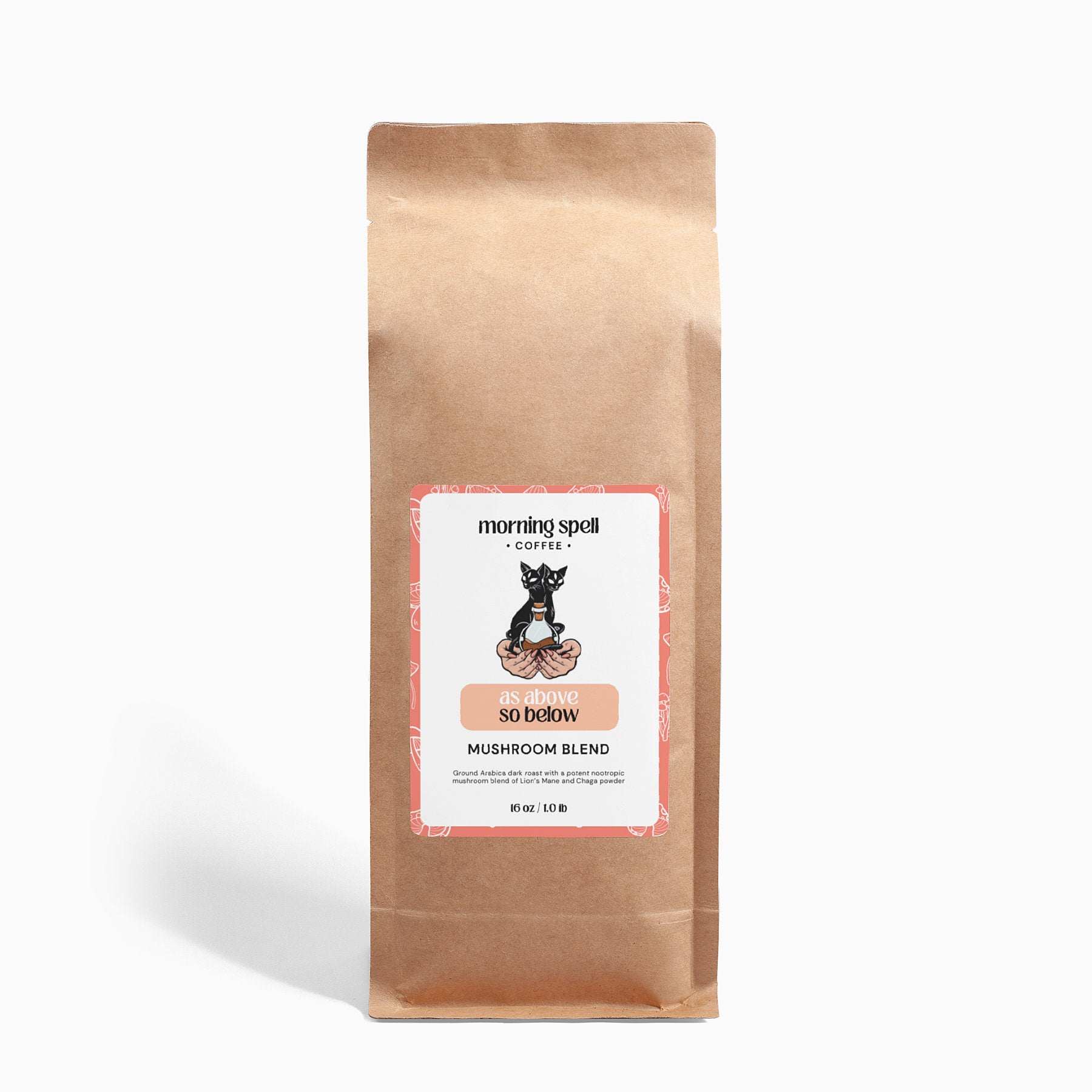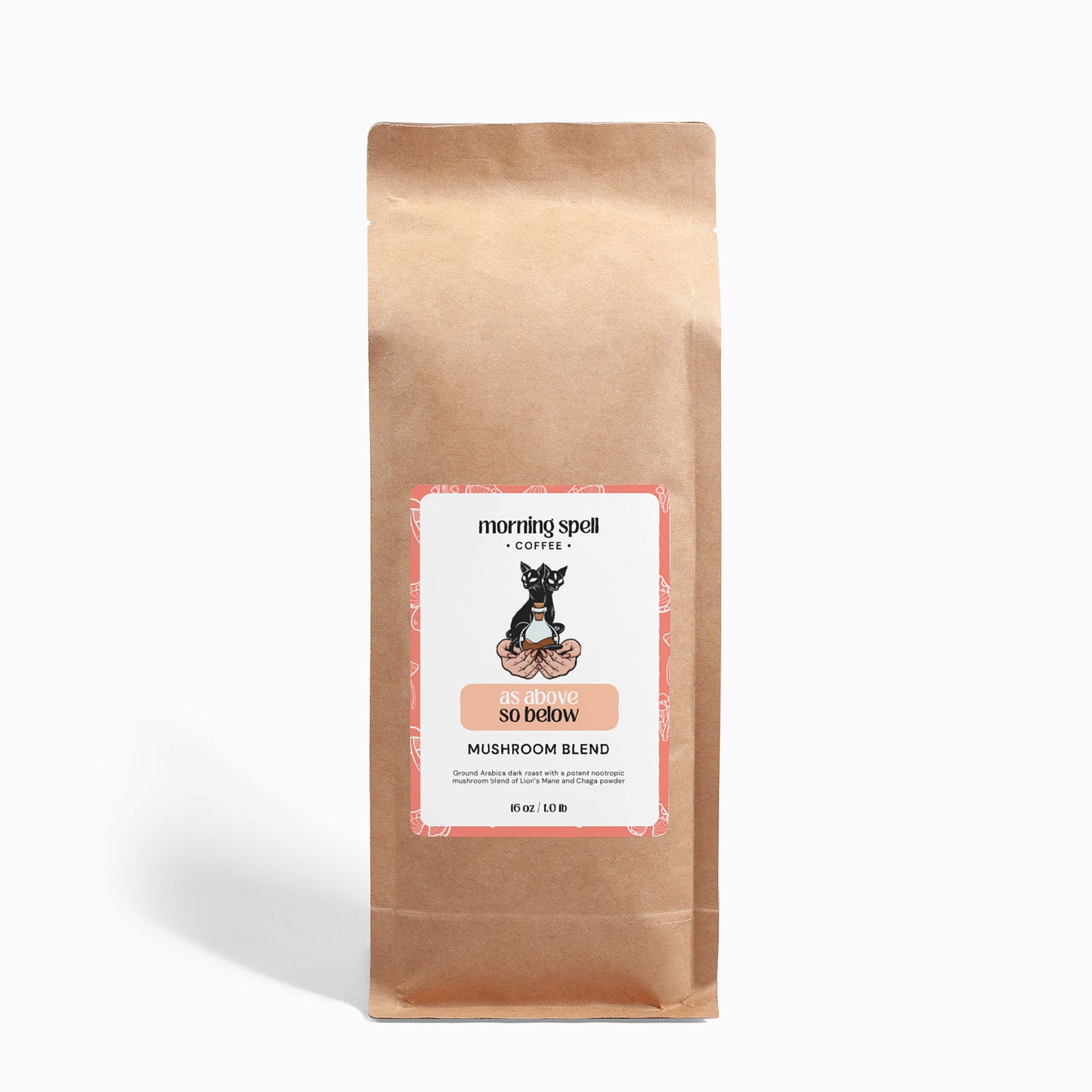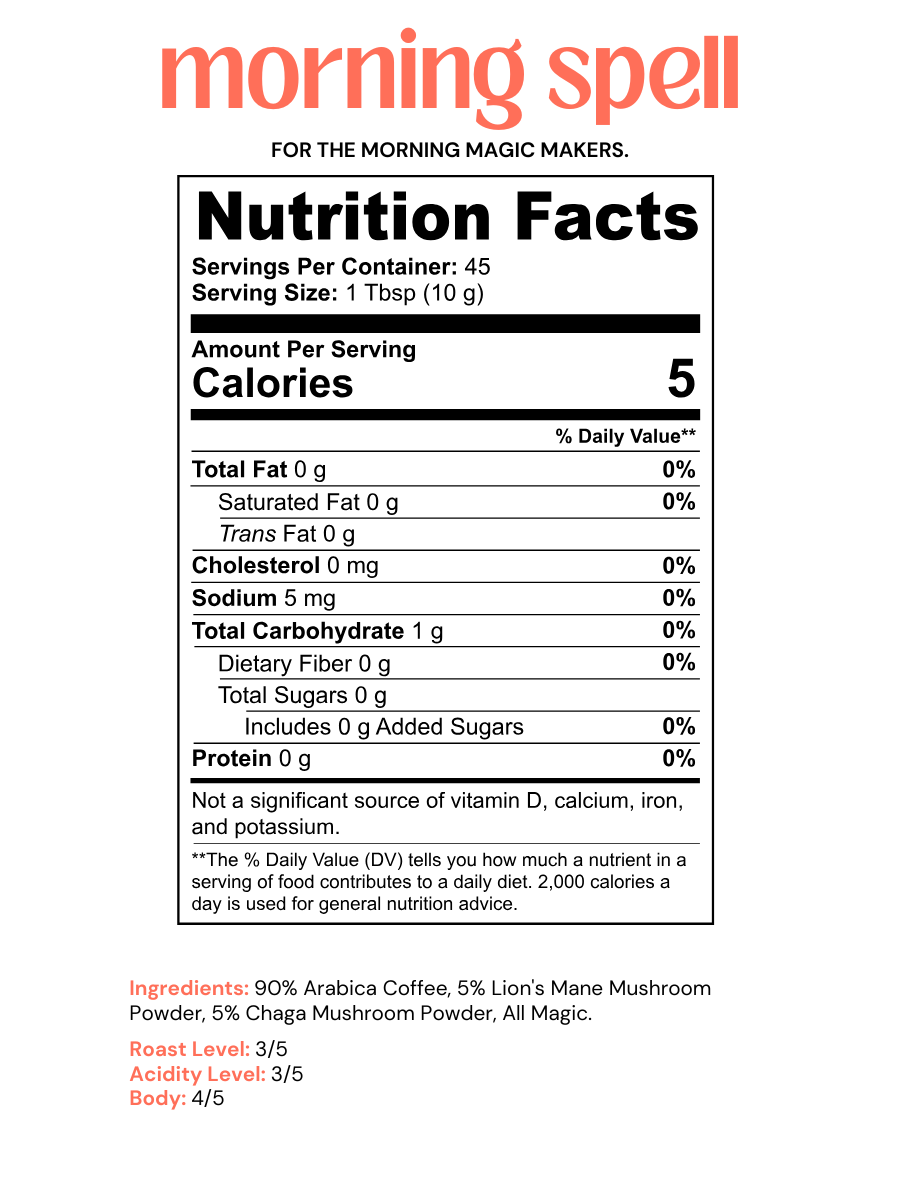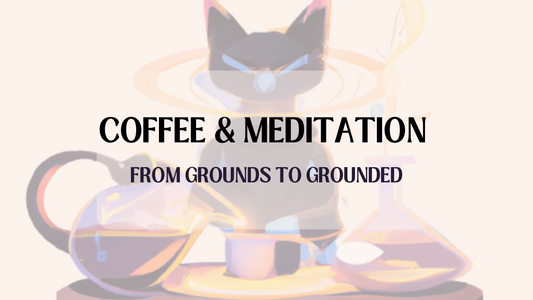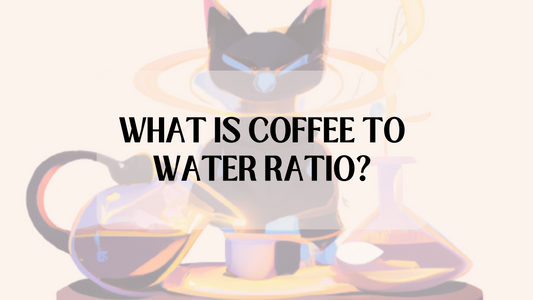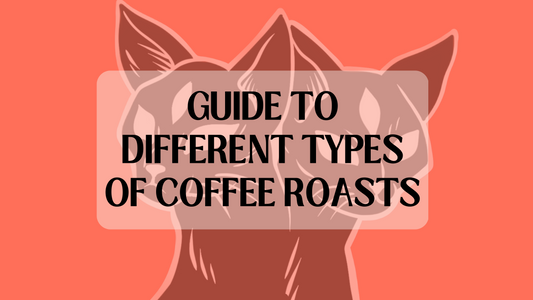Table of Contents
- What Makes Different Types of Coffee Roasts Unique?
- Coffee Roast Types to Try
- Light Roasts
- Characteristics of Light Roasts
- Types of Coffee Beans Used for Light Roasts
- Best Brewing Methods for Light Roasts
- Medium Roasts
- Characteristics of Medium Roasts
- Types of Coffee Beans used for Medium Roasts
- Best Brewing Methods for Medium Roasts
- Medium-Dark Roasts
- Characteristics of Medium-Dark Roasts
- Types of Coffee Beans Used for Medium-Dark Roasts
- Best Brewing Methods for Medium-Dark Roasts
- Dark Roasts
- Characteristics of Dark Roasts
- Types of Coffee Beans Used for Dark Roasts
- Best Brewing Methods for Dark Roasts
- Espresso Roasts
- Characteristics of Espresso Roasts
- Types of Coffee Beans Used for Espresso Roasts
- Best Brewing Methods for Espresso Roasts
- What Type Of Coffee Roast Has The Most Caffeine?
- Which Types of Coffee Roast Should You Try?
If you're a coffee lover, you're likely familiar with the terms for different types of coffee roasts like "light roast," "medium roast," and "dark roast." But what do these terms actually mean?
Understanding coffee roasts is important because it determines the flavor, aroma, and strength of the coffee. Knowing what kind of roast you prefer can help you make better choices when choosing coffee.
In this guide, we'll break down the different types of coffee roasts and help you understand what makes each one unique, so you can make an informed decision when trying something new.
What Makes Different Types of Coffee Roasts Unique?
Coffee roasting is the process of heating coffee beans to transform them into the aromatic and flavorful coffee we all love. The roasting process causes a chemical reaction in the coffee beans that creates a wide range of flavors and aromas. So, different temperatures and different types of beans = different types of coffee roasts that are equally delicious and unique.
Roasting coffee is a science, and it’s very much like being in a bean lab. 🧑🔬
Coffee Roast Types to Try
There are five main types of coffee roasts: light roast, medium roast, medium-dark roast, dark roast, and espresso roast. Let’s dive into each of them:
Light Roasts
When it comes to light roast coffee, there's no better way to experience the natural flavors of the bean. While some coffee drinkers may prefer a darker roast, there's a growing appreciation for the unique flavors of light roast coffee. In fact, many specialty coffee shops now feature light roasts as their preferred brew because of their exceptional taste.
Characteristics of Light Roasts
These coffee beans are roasted for the shortest amount of time and at a lower temperature compared to other types of coffee roasts, meaning they retain much of their original flavor. The result is a light body, a bright acidity, and a subtle flavor with no bitterness.
Light roast coffee is typically light brown in color and has a light, floral aroma.
Some of the characteristics of light roast coffee include:
- High acidity
- Bright, tangy flavor
- Little to no bitterness
- Smooth finish
Of all the types of coffee roasts, light roasts have the highest caffeine content because the roasting process does not remove as much caffeine as darker roasts.
With its lighter flavor profile, it's a great option for coffee drinkers who enjoy the taste of the beans themselves rather than the flavor of the roast.
Types of Coffee Beans Used for Light Roasts
Light roast coffee beans are typically made from beans that come from regions with high elevations, such as Ethiopia, Kenya, and Yemen. These regions offer ideal growing conditions for coffee, with rich soil and high altitudes that allow the beans to develop slowly, resulting in a more complex flavor profile. Ethiopian and Yemeni beans, in particular, are known for their bright and fruity flavors, while Kenyan beans are often described as having a berry-like sweetness.
Best Brewing Methods for Light Roasts
Light roasts are best brewed with methods that preserve their subtle flavor and bright acidity. Some recommended brewing methods include pour-over, drip coffee, and cold brew.
Medium Roasts
Medium roast coffee strikes a perfect balance between the original flavors of the bean and the flavors created through the roasting process. It's the most common roast found in specialty coffee shops and supermarkets alike. (But look out medium roast, because apparently light roast is right on your tail! 👀)
Characteristics of Medium Roasts
Medium roast coffee beans are roasted for a bit longer and at a slightly higher temperature than light roast coffee, which creates more complex flavors while still retaining much of the bean's original character.
They’re typically roasted at a temperature between 410°F and 428°F (210°C to 220°C). At this temperature, the beans have a medium-brown color and a balanced flavor with a slightly lower acidity than light roasts.
Some of the characteristics of medium roast coffee include:
- Medium acidity
- Balanced flavor
- Slightly sweeter and/or nuttier taste
- Aromatic
They also have a lower caffeine content than light roasts because the roasting process removes more caffeine.
Medium roasts have a good balance between all characteristics; medium body, a medium acidity, and a well-rounded flavor with a slight sweetness, making it an easy favorite.
Types of Coffee Beans used for Medium Roasts
The types of coffee beans used for medium roast coffees vary, but popular options include beans from Brazil, Costa Rica, or Guatemala. These beans typically have a medium acidity level and produce flavors like chocolate, caramel, or nuttiness when roasted to a medium level.
Best Brewing Methods for Medium Roasts
Medium roasts are versatile and work well with a variety of brewing methods, including drip coffee, pour-over, French press, or even cold brew.
Medium-Dark Roasts
Medium-dark roast coffee is a popular choice for coffee drinkers who want a bit more intensity and body in their cup.
Characteristics of Medium-Dark Roasts
Medium-dark roasts are roasted at a higher temperature and for a longer time than medium roast coffee, which results in a richer flavor profile. The beans are heated to a temperature of about 430-450°F (221-232°C), which causes the sugars in the beans to caramelize, giving the coffee a bittersweet taste.
Some of the characteristics of medium-dark roast coffee include:
- Relatively low acidity levels
- Bold and robust flavor, but with a bit of brightness
- Lower caffeine content than light and medium roasts
Medium-dark roasts have a slightly lower acidity level than medium roast coffee, but still have a pleasant brightness to them. The flavors of medium-dark roast coffee tend to be bold and robust, with notes of chocolate, nuttiness, and sometimes even smokiness.
They also have lower caffeine content than light roasts because the roasting process removes more caffeine.
Types of Coffee Beans Used for Medium-Dark Roasts
Medium-dark roast coffee beans are typically chosen from those with a rich, full-bodied flavor profile. Popular regions for these beans include Indonesia, Brazil, and Central America, which offer chocolate, caramel, and slight bitterness flavors. Common varieties include Sumatra Mandheling, Brazilian Santos, and Guatemalan Huehuetenango.
Additionally, arabica and robusta beans are also popular choices or can be blended to create a medium-dark roast with a nuanced and complex flavor profile. Some coffee roasters choose to blend them to get a roast that combines the best of both worlds.
Best Brewing Methods for Medium-Dark Roasts
Medium-dark roasts are best brewed with methods that preserve their bold flavor and full body. Some recommended brewing methods include French press, espresso, and cold brew.
The brewing time and temperature should be adjusted based on the specific bean and roast to bring out the best flavor. Generally, medium-dark roasts are best enjoyed with a splash of milk or cream to balance out the strong flavor and aroma.
Dark Roasts
Dark roast coffee is a popular option among coffee drinkers who prefer a stronger, more robust flavor.
Dark roasts are the darkest of all (surprise!) and are characterized by a shiny, oily surface on the beans. They’re sometimes referred to as "French Roasts" or "Italian Roasts" depending on the specific roast level.
Characteristics of Dark Roasts
Dark roast coffee beans are roasted at the highest temperature and for the longest amount of time, which gives them a dark color and bold, smoky flavor with a slightly bitter aftertaste.
They’re typically roasted to a temperature of about 465-480°F (240-249°C), which causes the natural oils in the beans to come to the surface and gives them the shiny appearance we mentioned, and a strong, intense flavor.
Some of the characteristics of dark roast coffee include:
- Low acidity
- Bold, smoky flavor
- Bitter aftertaste
- Heavier body
Due to the longer roasting process, dark roast coffee beans have less acidity and less of the original flavor of the beans.
The flavors of dark roast coffee tend to be bold and smoky, with hints of chocolate and caramel. Some drinkers describe dark roast coffee as having a "burnt" or "charred" taste, which can be polarizing for some.
They also have lower acidity than other roasts for those with sensitive stomachs.
Types of Coffee Beans Used for Dark Roasts
The types of coffee beans used for dark roast coffee can vary, but some popular options include beans from Indonesia, Brazil, or Guatemala. These beans have a low acidity level and offer deep, complex flavors when roasted to a dark level.
Best Brewing Methods for Dark Roasts
Dark roasts are often brewed using espresso machines or Moka pots, which are designed to extract the maximum flavor and aroma from the beans. They can also be brewed using French presses or pour-over methods. Dark roasts are best enjoyed as a straight espresso shot or with a small amount of milk or cream to balance out the strong flavor.
Espresso Roasts
Espresso roasts are one of the only types of coffee roasts specifically optimized for use in espresso machines. AKA, give us #allthestrongcoffee
Characteristics of Espresso Roasts
Espresso roast has a strong, intense flavor with a thick, creamy texture and a long-lasting aftertaste.
Some of the characteristics of espresso roast coffee are:
- Dark brown in color with oily surface
- Very low acidity
- Bold and intense flavor
- Strong and robust taste
- Slightly bitter with notes of chocolate or caramel
- Often used in espresso-based drinks such as lattes and cappuccinos
This roast is characterized by a very dark color and a shiny, oily surface on the beans. These beans are typically roasted to a temperature of about 465-480°F (240-249°C), which is what causes the natural oils to come to the surface.
Espresso roasts have a low acidity and a very full body, with a bold and robust taste.
Types of Coffee Beans Used for Espresso Roasts
Espresso roasts are usually made from a blend of arabica and robusta beans, with a higher proportion of Robusta beans. The Robusta beans add bitterness and crema to the espresso shot, while the arabica beans add complexity and aroma to the flavor.
These beans are often sourced from regions such as Latin America, Africa, and Asia
Best Brewing Methods for Espresso Roasts
Espresso roasts are specifically designed for use in espresso machines, which extract the maximum flavor and aroma from the beans using high pressure and short brewing times.
They are not recommended for use in other brewing methods, as the strong flavor and high caffeine content can be overwhelming as compared to other coffee roast types.
What Type Of Coffee Roast Has The Most Caffeine?
The importance of this question hasn’t gone unnoticed.

Note: Keep in mind that the caffeine levels can vary depending on the type of coffee bean used and the brewing method. This table provides a general guideline for the caffeine levels of different roast types.
If you're looking for a caffeine kick in your cup of coffee, you might be wondering what types of coffee roasts have the most caffeine. The truth is, the level of caffeine in your cup of coffee is not solely determined by the roast level.
The caffeine content in coffee can vary based on the type of coffee bean used, the altitude at which it is grown, and other environmental factors. However, while not the sole factor, the roast level is essentially the primary factor in determining caffeine content.
Some general rules of thumb that can help you understand caffeine levels in different roasts:
- Light roasts have the most caffeine per bean as they are roasted for the shortest amount of time and retain the most caffeine.
- Medium roasts have slightly less caffeine than light roasts due to the beans being roasted for a slightly longer period.
- Dark roasts have the least caffeine per bean as they are roasted for the longest amount of time, which causes the caffeine to break down and evaporate.
- Espresso roasts can have more caffeine than other roasts due to the method of brewing. Espresso shots are made by forcing hot water through finely ground coffee beans under high pressure, which extracts more caffeine than other brewing methods.
Contrary to popular belief, light roasts actually have the most caffeine of all types of coffee roasts. This is because during the roasting process, the longer the coffee is roasted, the more caffeine is lost. Light roasts are roasted for the shortest amount of time, leaving more caffeine intact in the beans. So, if you're looking for a high-caffeine coffee, you might want to opt for a light roast.
[ps, our Brew of Riches light roast coffee is a great place to start!]
And!
While it may seem counterintuitive, darker roasts actually have less caffeine than lighter roasts. This is because as the coffee beans are roasted for longer periods, the heat breaks down the caffeine molecule, resulting in lower caffeine content.
It's also important to note that the caffeine content of your coffee can vary depending on the type of coffee bean used, as well as the brewing method. For example, robusta coffee beans have a higher caffeine content than arabica beans, so a cup of robusta coffee will generally have more caffeine than a cup of arabica coffee.
Which Types of Coffee Roast Should You Try?
The type of roast you choose ultimately comes down to personal preference. If you prefer a lighter, more floral coffee, then a light roast might be the best choice for you. If you prefer a more balanced flavor with a slight sweetness, then a medium roast might be the best choice. And if you prefer a bold, smoky flavor, then a dark roast might be the best choice.
Here are a few things to consider when selecting a coffee roast:
- Flavor preferences: Everyone has different taste preferences when it comes to coffee. Some prefer a bold, robust flavor, while others prefer a smoother, milder taste. Experimenting with different roasts can help you discover your preferred flavor profile.
- Roast level: The level of roast can greatly affect the flavor of the coffee. Lighter roasts typically have a brighter, fruitier taste, while darker roasts tend to be bolder and more robust. It's worth trying a variety of roast levels to determine which suits your taste buds.
- Origin: As mentioned earlier, the location where coffee is grown can greatly affect its flavor profile. If you enjoy the unique taste of single origin coffee, then exploring different regions can be a fun way to discover new flavor profiles.
- Brewing method: The way you brew your coffee can also affect the taste. Different brewing methods, such as pour-over or French press, can enhance different flavor notes in the coffee.
- Caffeine content: Different roasts can have varying levels of caffeine. If you're sensitive to caffeine or prefer a lower-caffeine option, then choosing a lighter roast may be a better option.
Knowing the TLDR; above, some questions to ask yourself:
❓How strong do you like your coffee?
❓Are you looking for a bold or smooth taste?
❓Do you prefer a particular brewing method?
❓Are you interested in trying flavor profiles like nutty, fruity, or chocolatey, or do you prefer smokey, bitter flavors?
❓Does a blend of different roasts appeal to you so you can experience a complex flavor profile?
❓Are you sensitive to caffeine and prefer a lower-caffeine option?
We hope this guide helped you learn more about the different types of coffee roasts and encouraged you to try a few different kinds!

